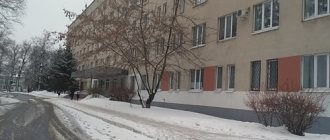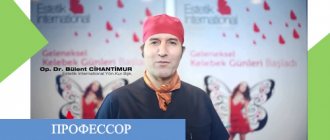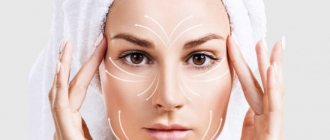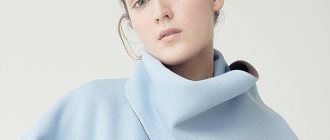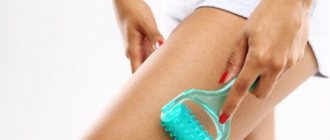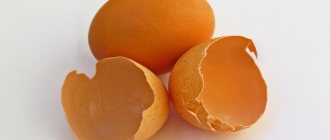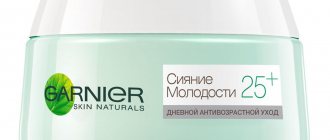Rybakin Artur Vladimirovich
- Russian plastic surgeon, scientist, founder and chief physician of the GALAXY beauty institute. Main works in the field of plastic surgery, genetic and tissue engineering. 1988-1994
— St. Petersburg State Medical University named after. Academician Pavlov (SPMU), Faculty of Medicine.
1994-1996
- Clinical residency at the Department of Maxillofacial Surgery, St. Petersburg State Medical University, named after. I.P. Pavlova.
1996-1998
- Postgraduate studies at the Department of Maxillofacial Surgery, St. Petersburg State Medical University, named after. I.P. Pavlova.
1997-2001
— Head of the Department of Plastic Surgery at the state institution “Cosmetology Clinic No. 84” (St. Petersburg Institute of Beauty)
2001-2016
- chief physician of St. Petersburg Institute of Beauty LLC, founded the clinic together with Nesvatova Valentina Mikhailovna.
From 2020
Currently, the chief physician of the GALAXY Beauty Institute clinic.
From 2020
to the present time, director of the non-state educational private institution of additional professional education “Institute of Plastic Surgery and Cosmetology”
Job
After receiving higher education, Artur Vladimirovich worked for 4 years in St. Petersburg at Cosmetology Clinic No. 84, holding the position of head of the department of aesthetic surgery.
Since 2001, Arthur Rybakin has been the chief physician of the St. Petersburg Institute of Beauty and the head of the plastic surgery department at SPIC. Patients are received in both Moscow and St. Petersburg.
Today, SPIC is the largest and most modern clinic, which performs the most complex and innovative operations to improve appearance, correct the consequences of injuries, and birth defects. The patients of this clinic are celebrities from Russia and abroad, the reputation of the doctors working at the Beauty Institute allows them to show stable high aesthetic results of all interventions performed. It is known that SPIC is among the first Russian institutions to use innovative technologies developed abroad so that Russian residents can receive the most modern assistance without leaving their homeland.
Scientific activity
In 1999
performed the first endoscopic plastic surgery in the mammary glands in Russia
In 2000
performed the first endoscopic plastic surgery using virtual helmets in Russia
In 2004
developed a method for tissue rejuvenation using cloned telomeric sequences
In 2010
first scientific report at a conference on plastic surgery using 3D visualization
In 2014
performed the world's first robot-assisted aesthetic plastic surgery (rejuvenation of the upper third of the face), using the Da Vinci robot-assisted surgical system
Since 2014
work in the field of tissue engineering (reproduction of cartilage tissue cells)
Periorbitoplasty - a new word in plastic surgery
According to Artur Vladimirovich, the development of surgery has already led to a rethinking of the concept of rejuvenation and aesthetic correction. Advanced technologies open up new horizons, force us to reconsider fundamental rules, complicate tasks and set higher goals. The result of the evolutionary development of the paradigm for improving the aesthetics of the face and body is the emergence of new plastic surgeries.
Periorbitoplasty is the newest direction of facial plastic surgery. Previously, the arsenal of surgeons was limited to blepharoplasty and correction of Asian eye shape. Today, this approach to rejuvenation of the periorbital area is considered outdated. The aesthetic perception of the face depends on many factors: the height of the outer corner of the eye, the width and inclination of the palpebral fissure, the position of the fold of the upper eyelid, and the contours of the zygomatic region.
Arthur Vladimirovich insists on the need to use an integrated approach to rejuvenation of the periorbital zone. With the help of operations that are performed as part of periorbitoplasty, he simulates each of the parameters listed above and achieves improvements in appearance, which were out of the question when using old techniques.
The concept of facial rejuvenation has also changed. Age-related processes affect the skin-fat and muscle-aponeurotic structures. The main task of a plastic surgeon, Artur Vladimirovich, sees is the correction of defects at the deep tissue level, which became possible thanks to the development of endoscopic equipment and the introduction of tissue engineering technologies.
The development of endoscopic technology has made it possible to abandon long incisions and perform operations that do not leave visible scars. Arthur Vladimirovich draws attention to other advantages of endoscopy that are not obvious to the patient - reduction of tissue trauma, reduction of blood loss, reduction of the recovery period.
This is a story about a patient who underwent rhinoplasty about 10 years ago.
Despite the good results obtained as a result of the intervention by one famous plastic surgeon, the patient felt that “the axis of his spine does not quite coincide with the axis of his nose.” At the first opportunity (and it did not present itself soon) he tried to combine these important axes. The surgeon who aligned the axes used an external approach and, apparently, was so carried away by the process that he forgot… a napkin in the patient’s nose! Although, perhaps he didn’t forget, but simply tried to use it as a new type of implant? After the operation, as you understand, the patient temporarily stopped paying attention to any axes! The surgeon explained to the patient that the combination was successful, but he did not know why the nose was increasing in size day by day, and asked him not to bother him anymore over trifles. The patient began to seek help from other surgeons. Most of the surgeons suggested that he contact the author of the work. Some surgeons explained to him that his nose looked good - like a man (i.e., courageous) and suggested that he do nothing. The patient carried with him a set of plasticine noses of different shapes, which he deftly placed on the plywood skull, trying to explain to the surgeons where his axes were now. The nose gradually grew larger and the patient, coming to the next surgeon for a consultation, sent the most impressionable part of other future potential patients into flight, which the surgeons did not like.
When , during the operation, a napkin was removed from the nose in pieces, there was no limit to surprise! Even more surprising was what remained of the long-suffering nose. However, it was finally possible to obtain an acceptable result.
Despite the fact that we were against it, the patient tried to file a complaint with the forgetful surgeon, but he recommended suing us for not completely removing the napkin! How did he determine this? Apparently he had a lot of experience with napkins.
The falsity of the operation lay in the presence of an inflammatory process, which, on the one hand, melted the tissue, and, on the other, did not allow, based on the canons of surgery, to sew up postoperative wounds. In addition, there could be no question of transplanting any cartilage into the area of inflammation.
The operation was performed using internal approaches. The patient received a normal nose, but stated that the axes of the spine and nose were still not aligned. The forgetful surgeon received many lawsuits, and we got the plasticine noses and plywood skull.
Tissue engineering in plastic surgery
The introduction of tissue engineering technologies expands the horizons of anti-aging correction in solving the problem of tissue deficiency that has formed against the background of age-related changes. To fill the volume deficit and model facial features, Artur Vladimirovich uses the transplantation of the patient’s fat or cartilage tissue - a natural and safe transplant material.
Artur Vladimirovich uses tissue engineering methods in rhinoplasty, malarplasty, and genioplasty. He is convinced that today aesthetic surgeons should integrate tissue engineering technologies into daily clinical practice. Arthur Vladimirovich proves the validity of his convictions with the results of plastic surgery.
The doctor actively uses autolipotransplantation, or lipofilling, in mammoplasty. Modeling the shape and rejuvenation of the mammary glands through fat tissue transplantation does not have the disadvantages inherent in silicone implants. There is no risk of capsular contracture, rotation or displacement of the implant. Adipose tissue is safe and allows flexible breast shaping, adding volume where needed. The operation is performed without incisions, there is no recovery period, and there are no scars left.
Biography facts
Facts from the biography of Artur Vladimirovich are known not only to colleagues and fans of his talent, but also to people interested in plastic surgery. He received his medical education at St. Petersburg State Medical University named after academician I.P. Pavlova. Since 1997, he worked as the head of the plastic surgery department of the St. Petersburg “Cosmetology Clinic No. 84”, which was subsequently reorganized into the St. Petersburg Institute of Beauty SPIC.
Since 2001, he has been the chief physician and director of the Institute of Beauty. Conducts scientific and practical activities. He regularly makes presentations at national and international conferences dedicated to issues of aesthetic and reconstructive surgery.
He operates and sees patients in St. Petersburg and Moscow, at the Galaktika aesthetic medicine clinic. To make an appointment with Arthur Vladimirovich, you need to contact the clinic administrator.
Arthur Rybakin
Among his patients are all the cream of Russian show business: from Alla Pugacheva to the participants of the “Star Factory”. The queues for him last for several weeks. And many celebrities looking at you from blue screens have been on his operating table. Today we are visiting our portal with one of the most famous plastic surgeons in Russia, Doctor of Medical Sciences Arthur Rybakin!
Corr.: Artur Vladimirovich, hello. Thank you for your time. Tell me, how many “stars” are looking for a solution to their problems in plastic surgery? Or were they also affected by the fashion for natural beauty?
Arthur Rybakin: Without false modesty, I can say that almost every day I see my patients on the covers of glossy magazines. I think this is the best illustration of your question.
Corr.: It is known that you prefer to work at night. How did you switch to this schedule?
Arthur Rybakin: It happened gradually. I work very calmly at night: there are no distractions from everyday activities, no patients disturbing me, no fuss. By the way, I recently learned that almost all surgeons in Los Angeles operate after midnight. And there is a rational explanation for this. Anesthesia is an imitation of sleep. If the operation takes place in the morning, the body finds itself in a stressful state when it is forcibly forced to sleep at an unusual time. The biological clock is disrupted, biorhythms are disrupted, and it is more difficult for the patient to recover.
I ask patients to come to their appointment with photographs: 5 options for the nose they like, and 5 options for the one they don’t like.
Corr.: Do people often come to you asking you to make your nose like that of some actress or singer?
Arthur Rybakin: Yes, often. But I myself ask patients to come to the appointment with photographs: 5 options for the nose they like, and 5 options for the one they don’t like. It is impossible to achieve one-to-one resemblance, but you can make it very similar to the original.
Corr.: What part of the body today cannot be corrected by plastic surgery?
Arthur Rybakin: There is no such part of the body, everything can be changed. The question is how noticeable the marks from the operation will be. With rhinoplasty, for example, they are easiest to hide. In general, the rule in plastic surgery is: the lower on the body the operation was, the more noticeable the scars are.
Corr.: In films, this technique is sometimes used: a fugitive, with the help of plastic surgery, completely changes his appearance and hides from his pursuers. Is this possible in real life?
Arthur Rybakin: Theoretically, yes, but such large-scale changes require several operations. This will take much more time than movie characters do.
Corr.: Is it possible to make such a perfect rhinoplasty that another specialist will not detect it?
Arthur Rybakin: Again, theoretically yes. But in 90% of cases, one high-quality surgeon will still notice (and appreciate) the work of another high-quality surgeon.
Corr.: What dangers can await a patient at a plastic surgery clinic?
Arthur Rybakin: If we talk about fatal cases, then 99% of them are associated with unsuccessful anesthesia. But, as a rule, the anesthesiologist remains in the shadows, and all the dogs are focused on the surgeon. Otherwise, television horror stories remain television horror stories, and have no relation to reality. I say this, remembering stories about ruptured implants and cut arteries in the nose.
Our plastic surgeons began their professional careers 2-3 years later than Western ones.
Corr.: But there are many patients who are not satisfied with the results of operations?
Arthur Rybakin: Such people are divided into two categories. The first category includes those who are constantly in a hurry. They start making claims early because they don’t see the results of the operation. But the fact is that changes do not occur instantly, but go smoothly and imperceptibly, like the movement of a clock hand. For such patients, it may be enough to show photographs taken two weeks apart. And they magically agree that change does happen.
The second category includes people who are always dissatisfied with everything. I had one patient who had three rhinoplasties, but could not decide which nose she liked best. I could barely talk her out of the fourth operation.
Corr.: Concluding the topic of scandals, I would like to know your opinion regarding the conversations that in Russia they allegedly use methods that are prohibited in Western countries.
Arthur Rybakin: Can you give me at least one example of a prohibited technique? Don't try, you won't find it. Yes, some techniques are eventually recognized as unsafe and are no longer used. But this happens almost simultaneously in different countries with developed plastic surgery. Russia is among them.
Although, the domestic school of plastic surgery still had one drawback. Until 2009, our medical universities did not teach the specialty of plastic surgeon. That is, at first young doctors received one education, and then completed their studies as a plastic surgeon at various courses. This did not make them worse as specialists, but it greatly increased the training period. Our plastic surgeons began their professional careers 2-3 years later than Western ones. Now this gap has been eliminated, and graduates of Russian universities are in no way inferior to graduates from Europe and the USA.
Corr.: Do you yourself value natural beauty more or that touched up with a scalpel?
Arthur Rybakin: There is no need to separate these two concepts. Modern plastic surgery strives for a natural result. So, if a person has a large nose shortened or bags under his eyes removed, this is only a plus. On the other hand, I strongly oppose the painful craving for plastic surgery. Lips covering half of the face, incredibly sized breasts and a nose like an alien’s - it’s simply ugly. In my personal opinion, such deformities have nothing to do with aesthetic medicine.
Search the network for former patients, find out details of operations from them, sign up and go for consultations
Corr.: What unusual requests did you receive?
Arthur Rybakin: It seems to me that the set of such requests is approximately the same and is dictated by the popularity of certain films. For example, more than 10 years have passed since the release of The Lord of the Rings, but there are still patients who ask for elven ears. One girl recently wanted ears “like Avatar.” True, I did not see the difference between them and the ears of an elf.
Corr.: Please give our readers some tips on how to choose a plastic surgeon.
Arthur Rybakin: It would be ideal if among your friends there are people who have already experienced all the delights of plastic surgery. Their recommendations are the most valuable advice you can receive. Your second assistant in your search should be the Internet. Today, a huge number of websites are dedicated to plastic surgery. I think everyone values their health enough to not be lazy and spend a few evenings studying the “personal affairs” of specialists. Search the network for former patients, find out details of operations from them, make an appointment and go to consultations with doctors. Yes, I understand, it takes time. But plastic surgery cannot be rushed.
